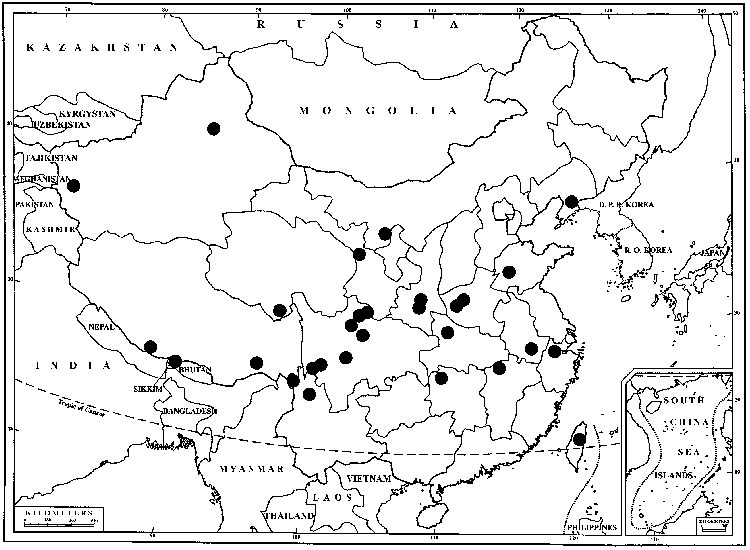Didymodon ferrugineus
J. Bryol. 11: 599. 1982,.
Plants usually redbrown. Stems to 2.5 cm, central strand present. Stem-leaves appressed to spreading when dry, strongly recurved and keeled when moist, monomorphic, ovate-triangular to ovatelanceolate, adaxially grooved along costa, 0.8–2 mm, base scarcely differentiated in shape to ovate, margins nearly plane to recurved at mid leaf, usually entire, apex broadly acute, not fragile; costa percurrent to short-excurrent, weakly tapering and not much wider at the base, pad of cells absent, adaxial costal cells elongate, 2–4 cells wide at mid leaf, guide cells in 1 layer; basal laminal cells little differentiated, quadrate or very shortrectangular, walls thickened; distal laminal cells 11–15 µm wide, 1: 1, papillae usually present, simple, often large and sharp, 1–3 centered over lumens, lumens angular, walls irregularly thickened, convex on both sides, 1-stratose. Specialized asexual reproduction specialized structures absent. Seta 0.6–1.2 cm. Capsule 0.7–1.5 mm; peristome teeth 16, linear, cleft to near base, nearly straight to twisted counterclockwise once, 275–600 µm. Spores 7–9 µm. Distal laminal KOH reaction red or orangebrown.
Phenology: Capsules mature winter–spring.
Habitat: Soil, ledges and outcrops, limestone, tundra, wet areas
Elevation: low to moderate elevations (60-1400 m)
Distribution

Greenland, Alta., B.C., Man., N.B., Nfld. and Labr., N.W.T., Nunavut, Ont., Yukon, Alaska, Ariz., Ark., Colo., Ill., Mich., Mont., N.Mex., N.Y., N.C., Vt., Va., W.Va., Mexico, West Indies, Central America, Europe, Asia, n Africa
Discussion
The sporophyte of Didymodon ferrugineus is rare and similar to, but often smaller than, that of D. fallax. This species is easily mistaken for the western Triquetrella californica, which, however, is quickly distinguished by its triangular stem section, distal leaf margins sharply crenulate by projecting papillae (but not by projecting cell walls as in D. nigrescens), and distal medial laminal papillae tall, branching from the base, and centered over each lumen. It intergrades with D. fallax to some extent but is usually larger, with broader, ovate-lanceolate leaves that are commonly strongly reflexed (and therefore do not lie flat on a slide), and the papillae may be large and strongly evident. The leaf base is never abruptly ovate as it sometimes is in D. fallax. The peristome is very fragile and often appears missing.
The illegitimate name Tortula recurvifolia (Schimper) Austin has also been used for this species.
Selected References
None.
Lower Taxa
"um" is not declared as a valid unit of measurement for this property."um" is not declared as a valid unit of measurement for this property.